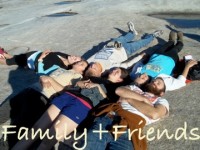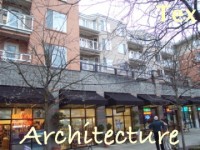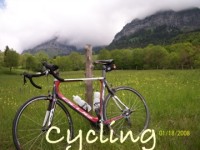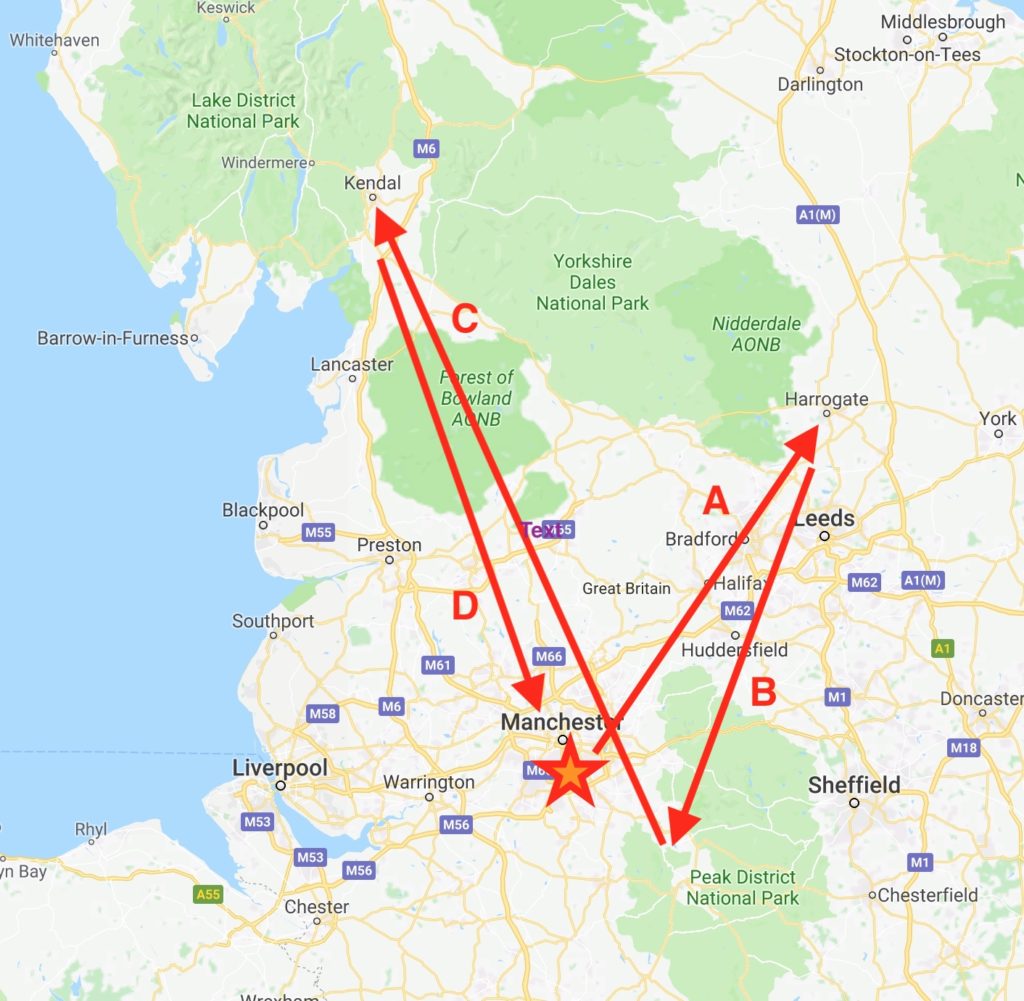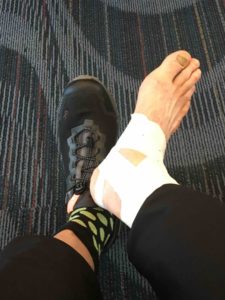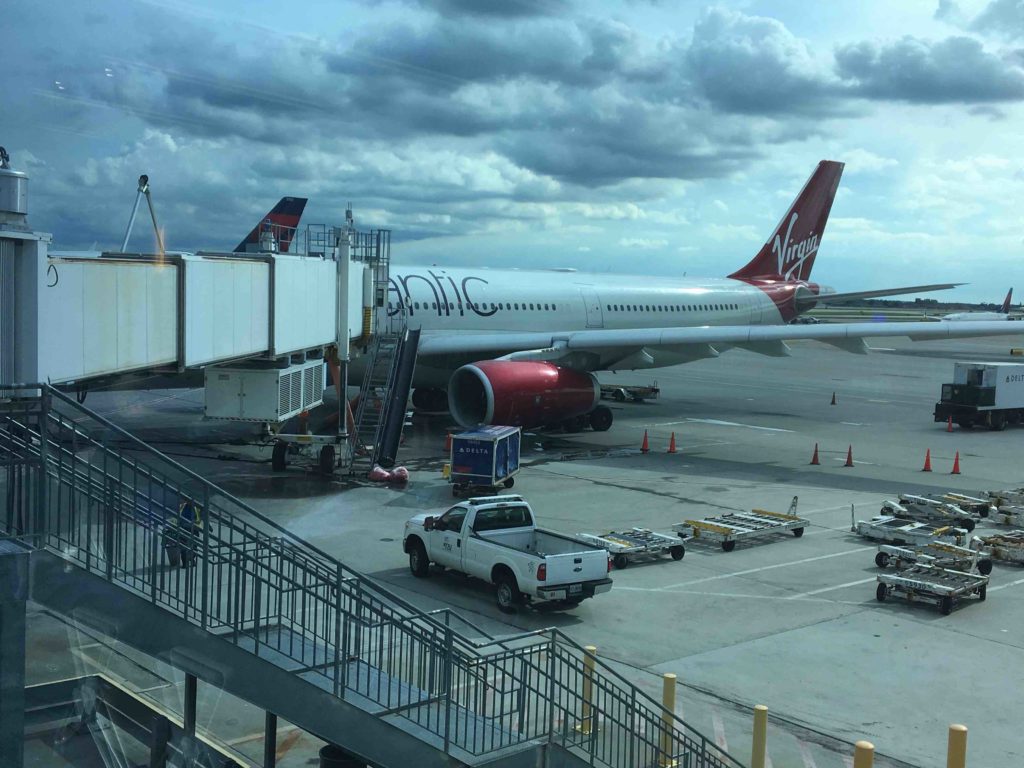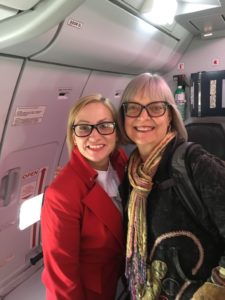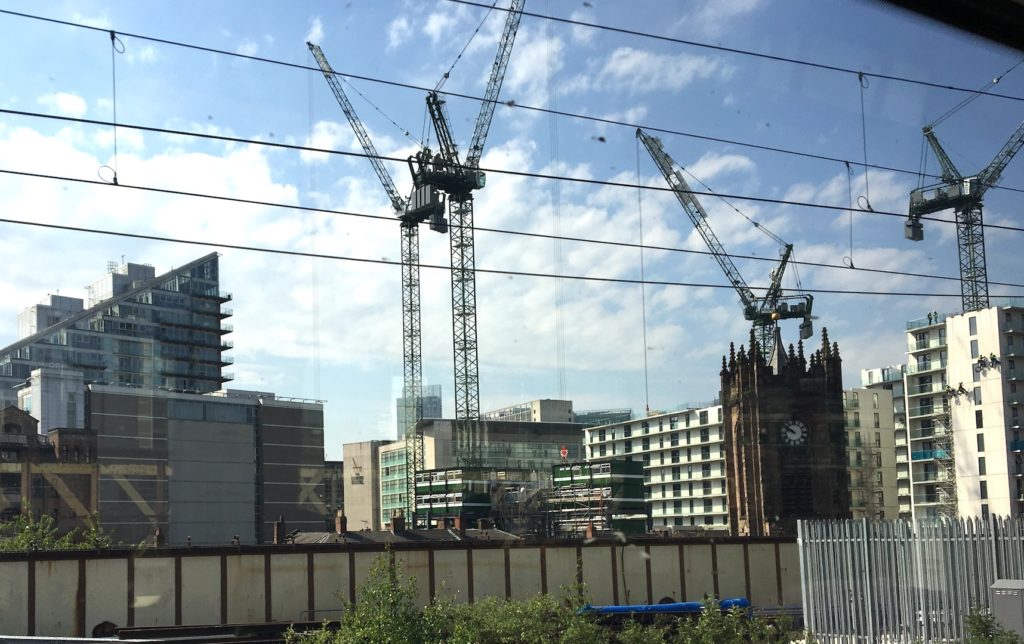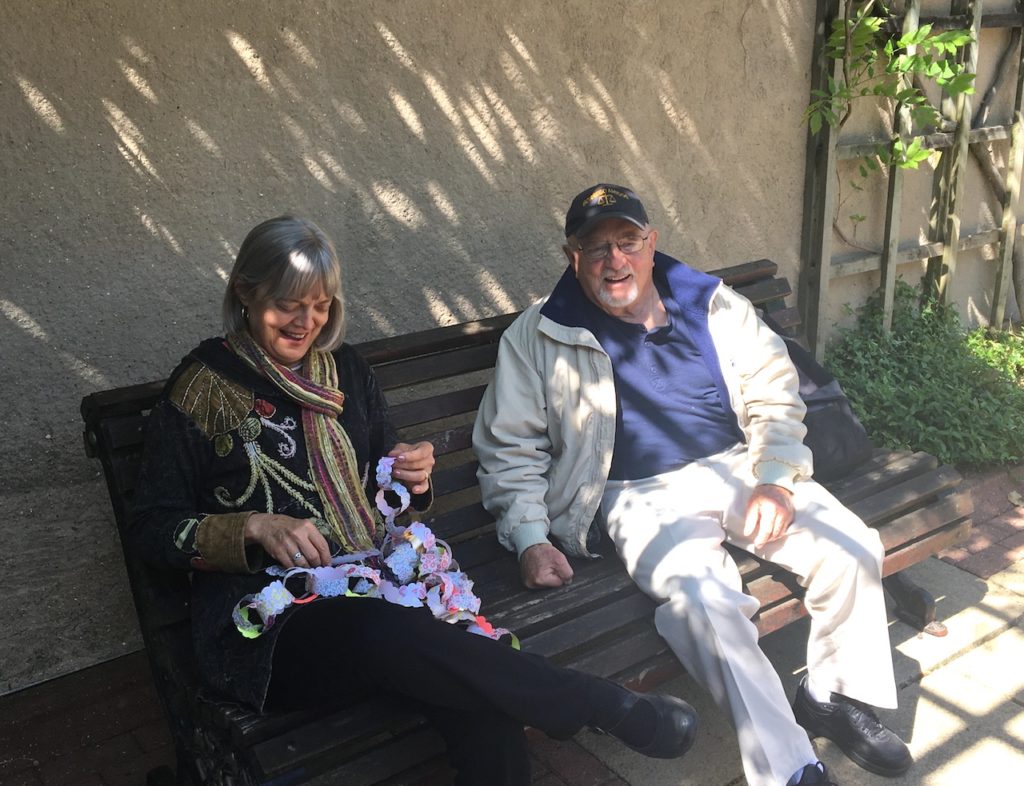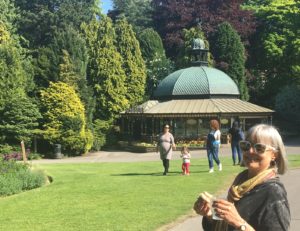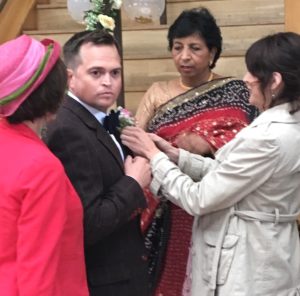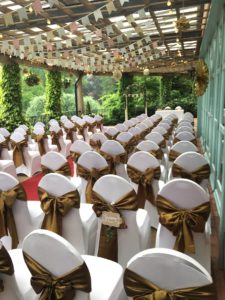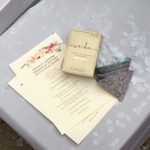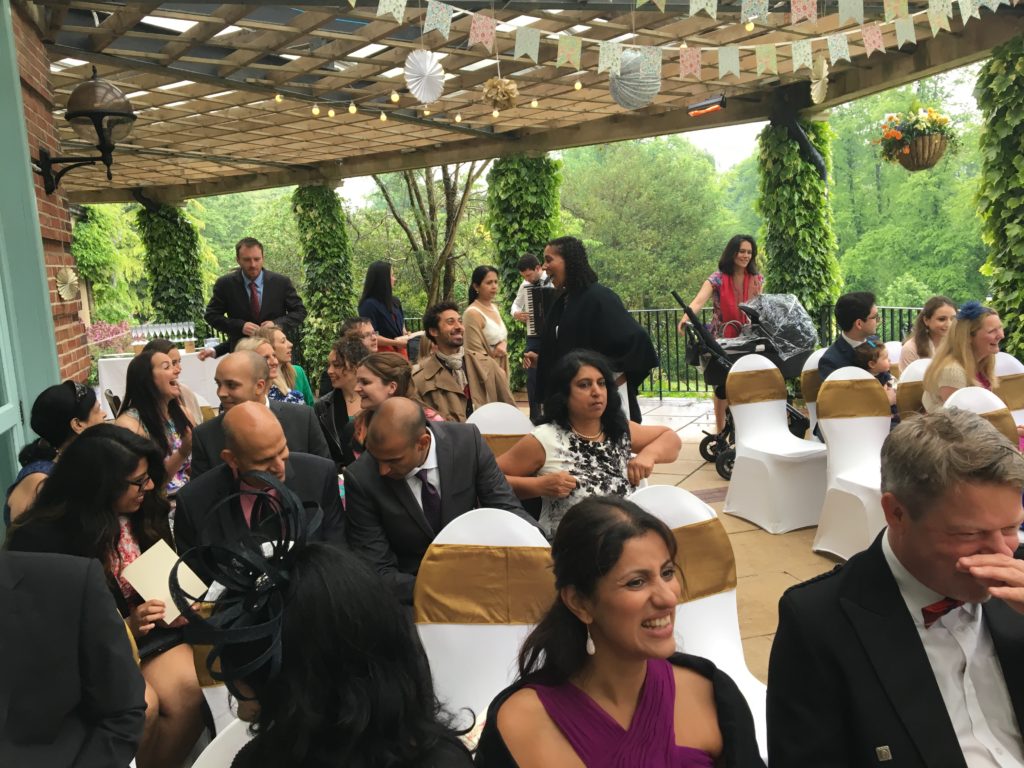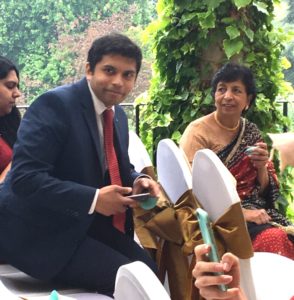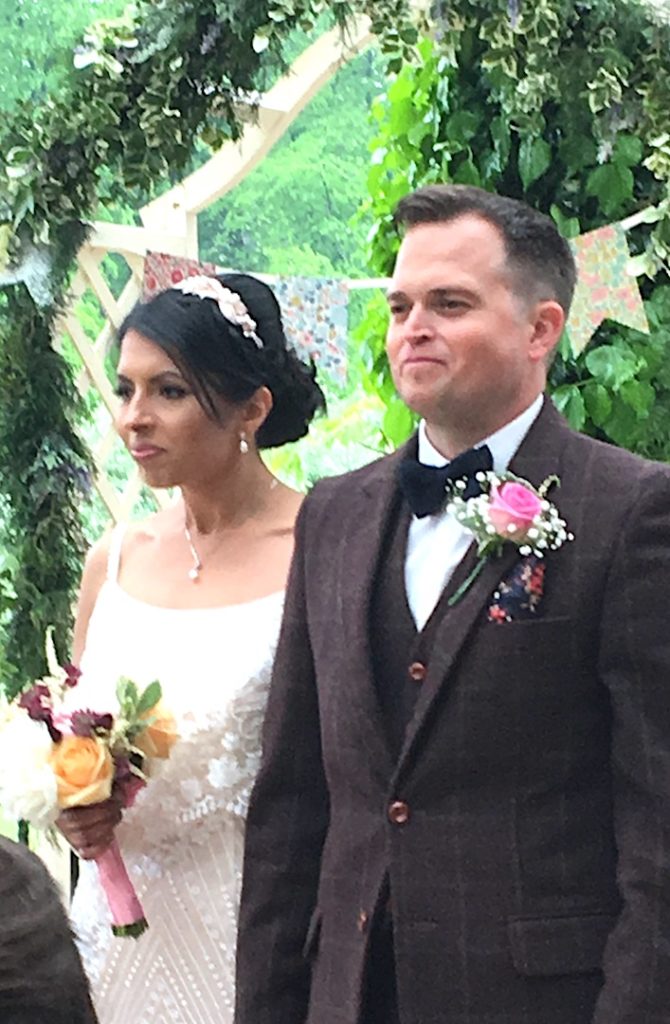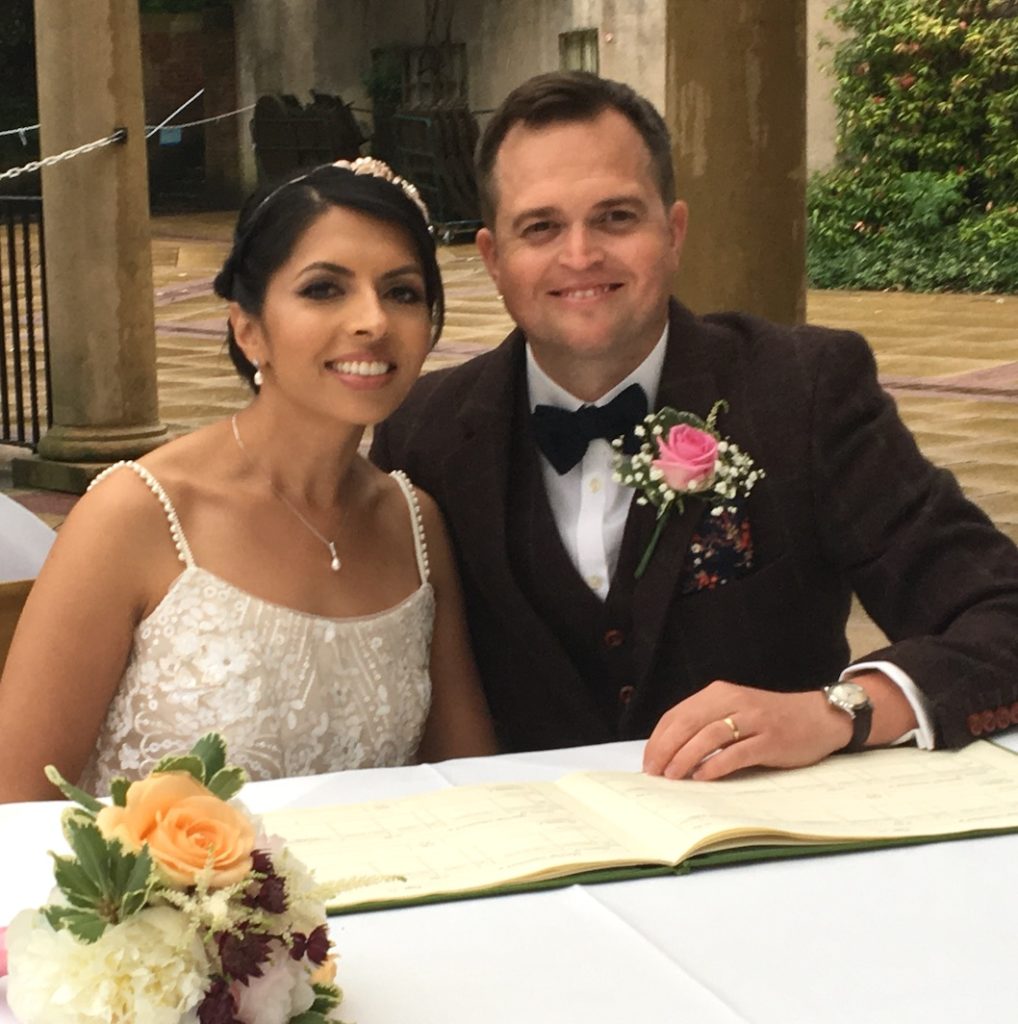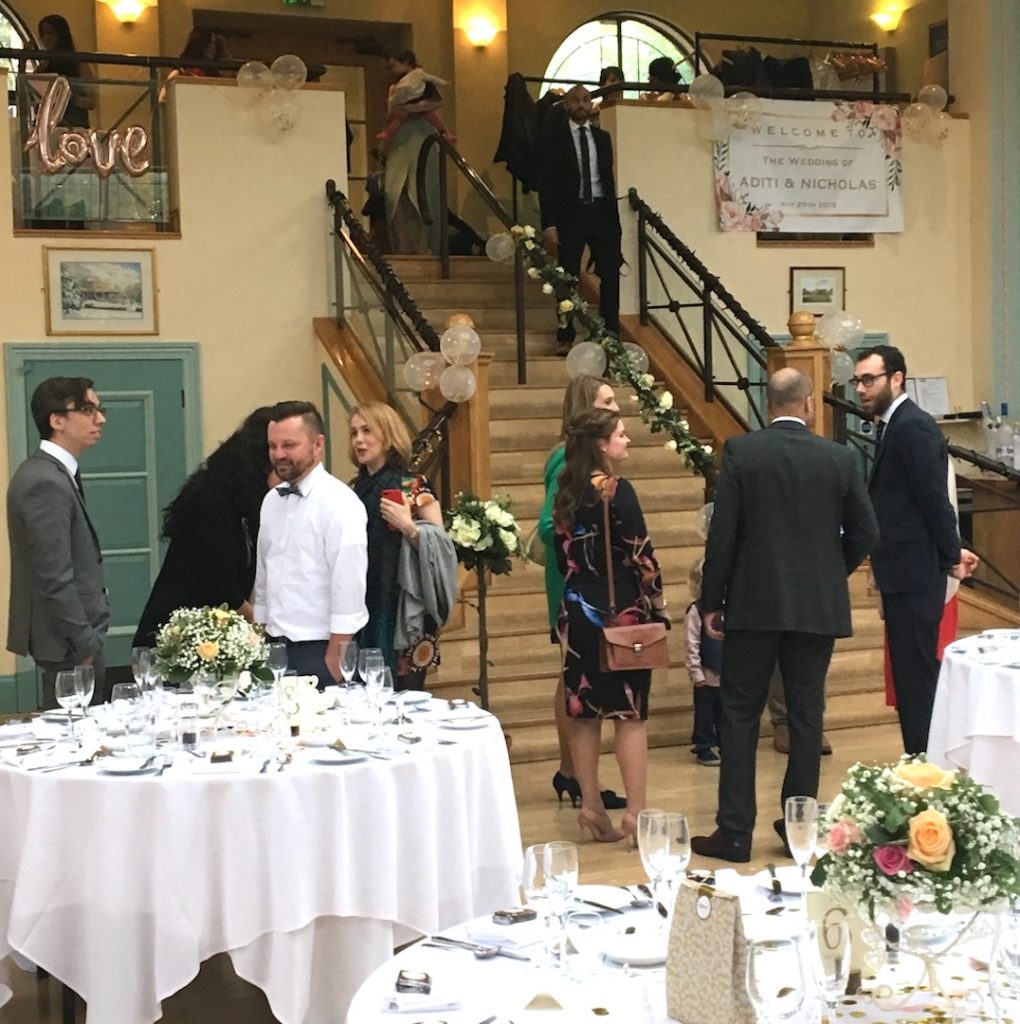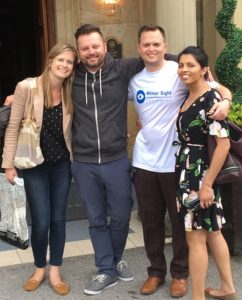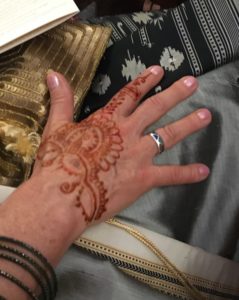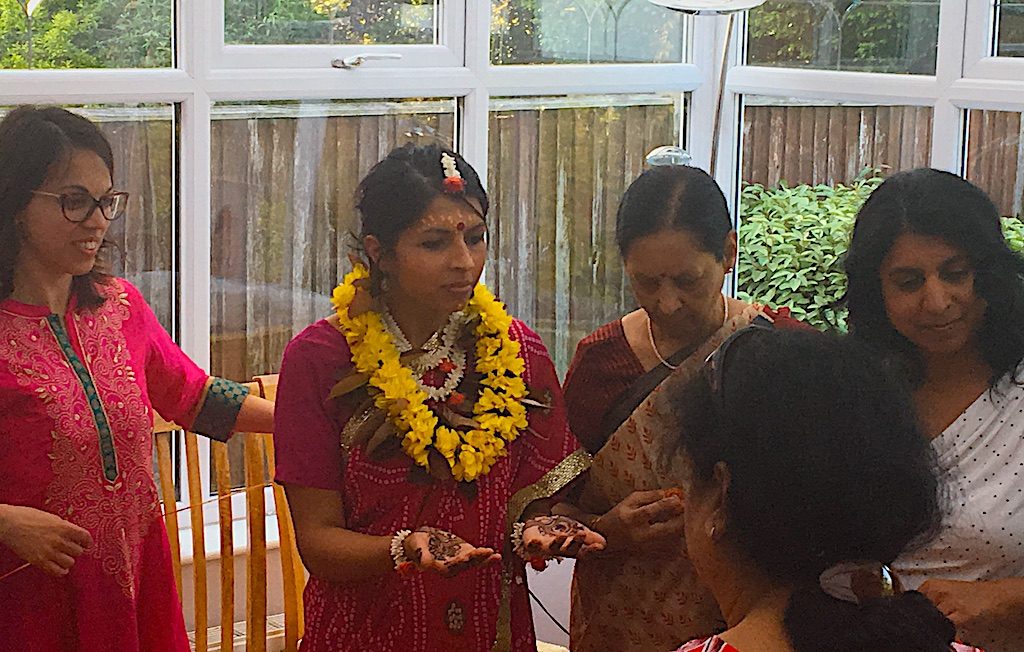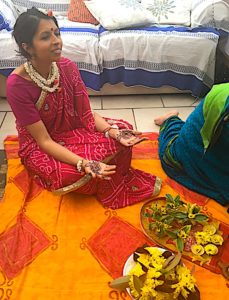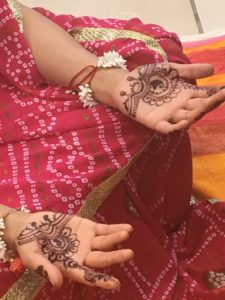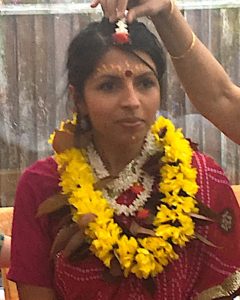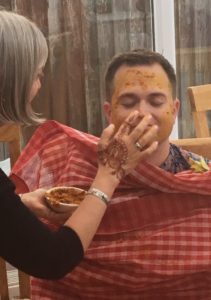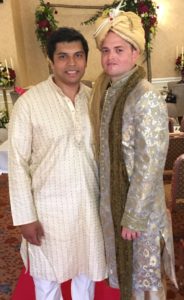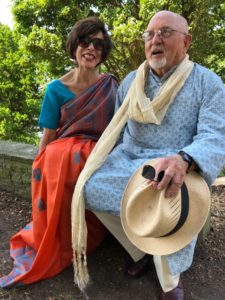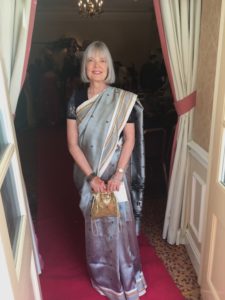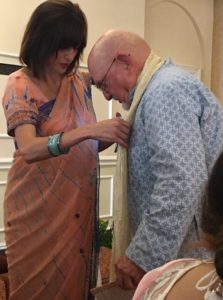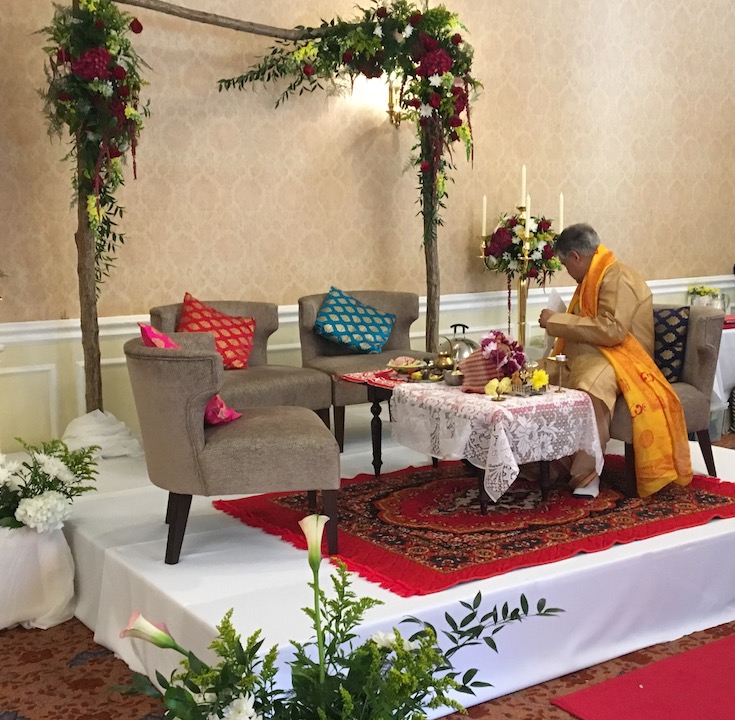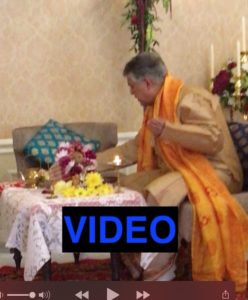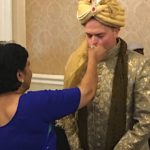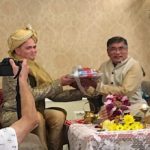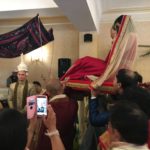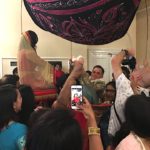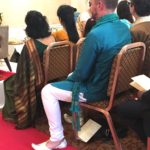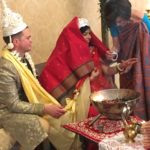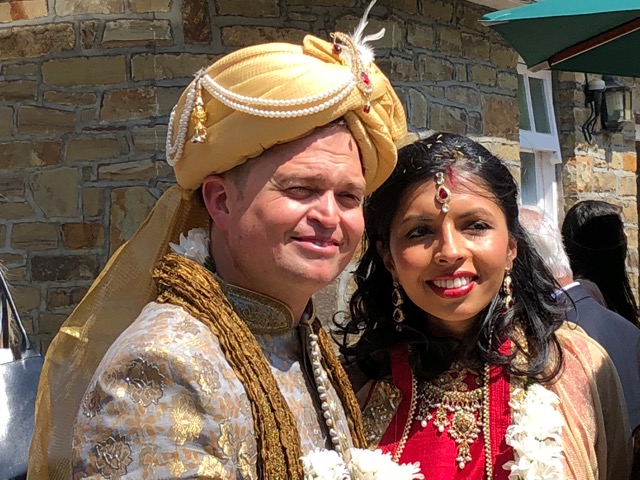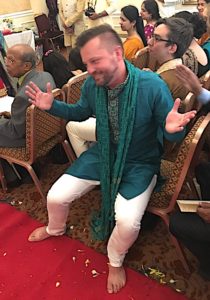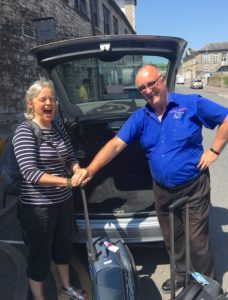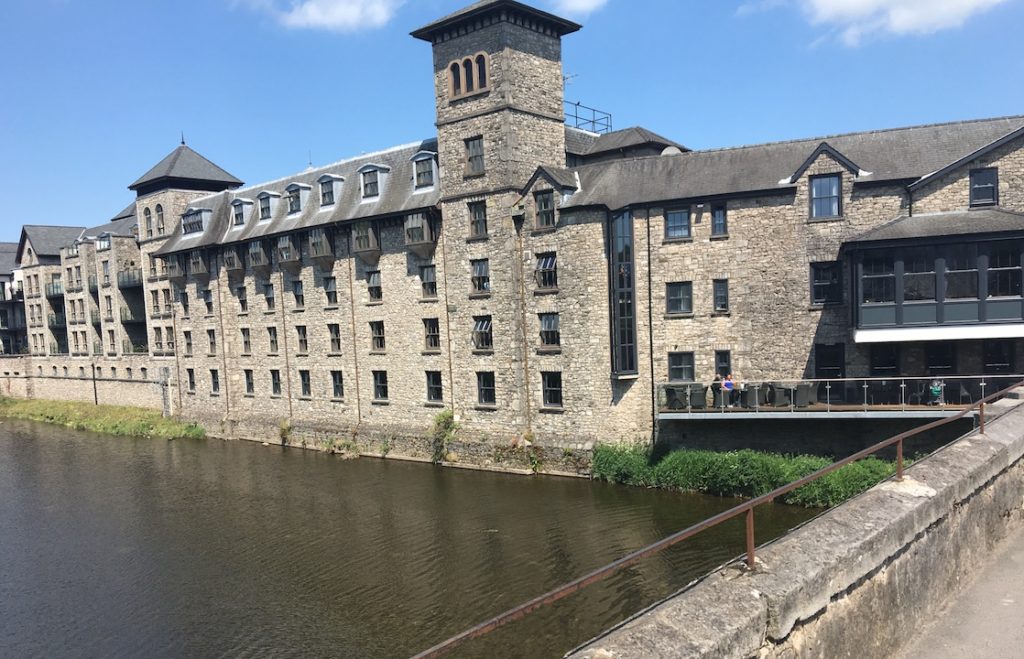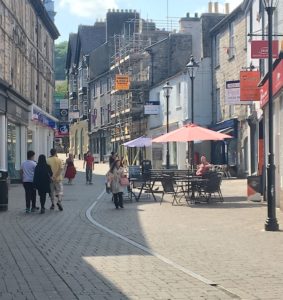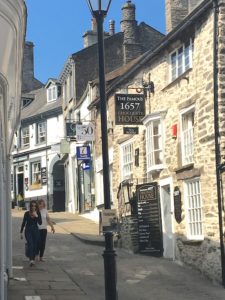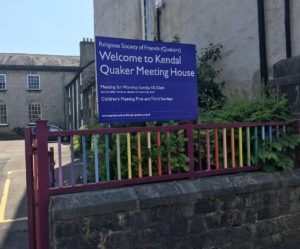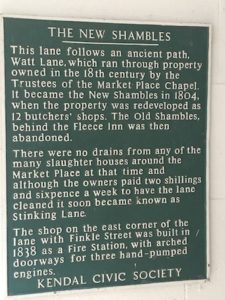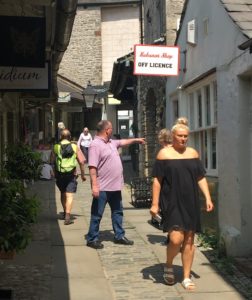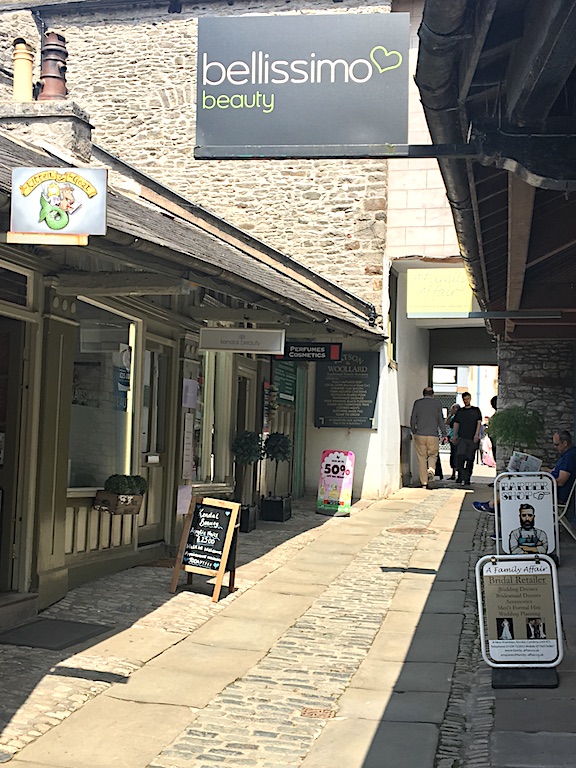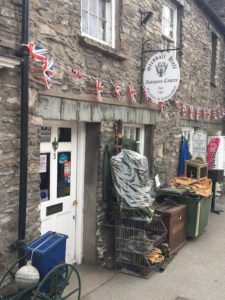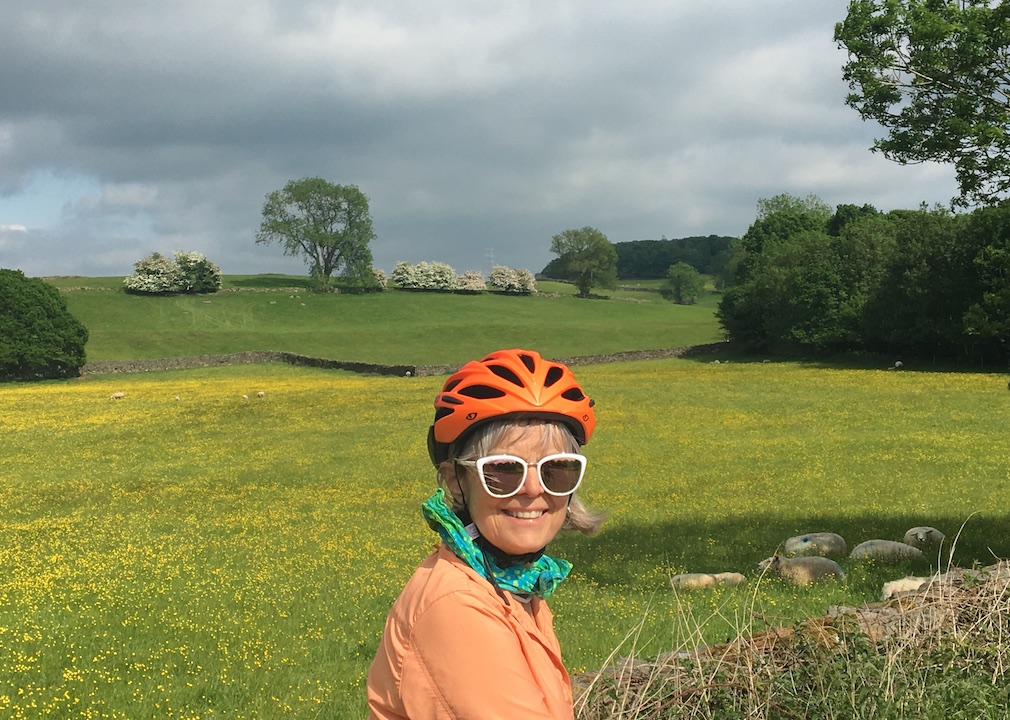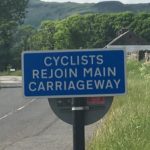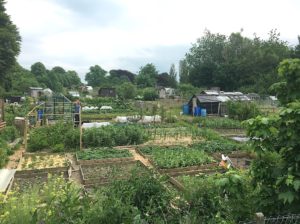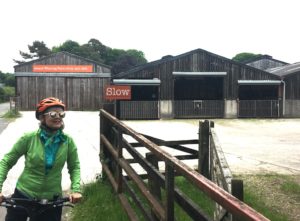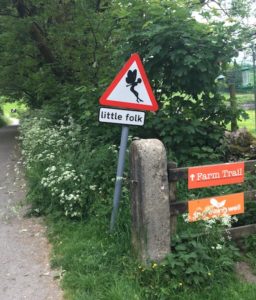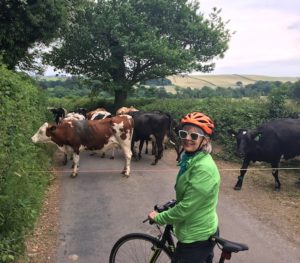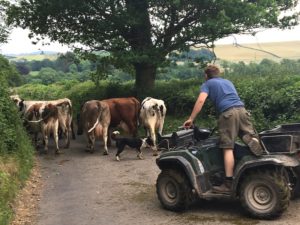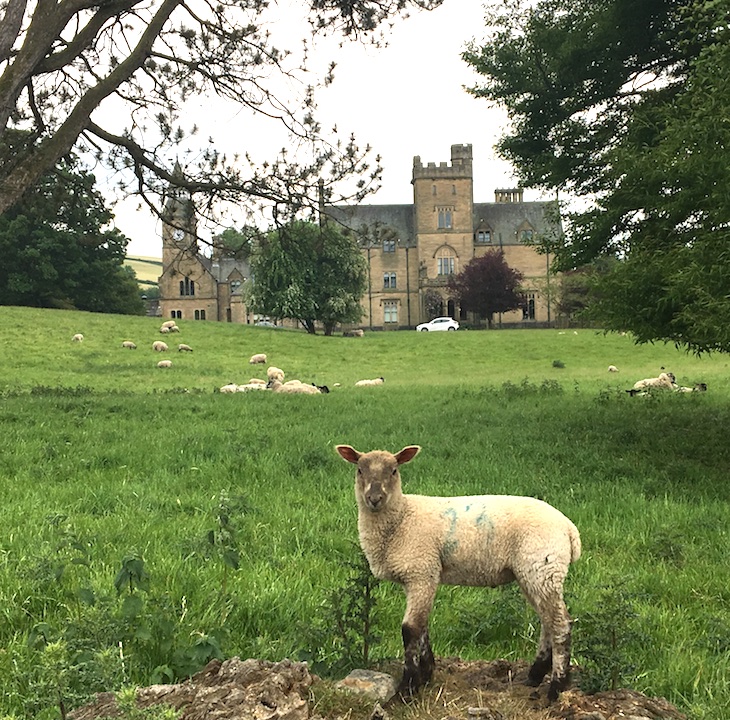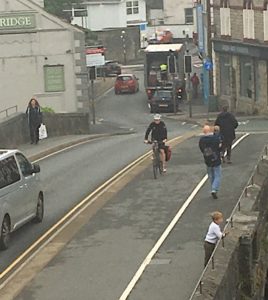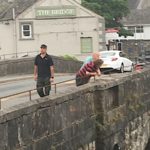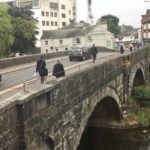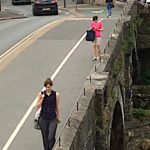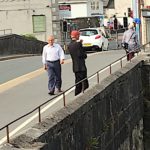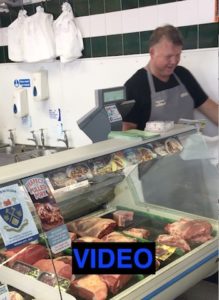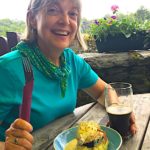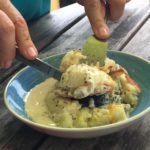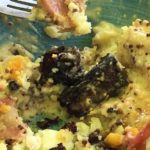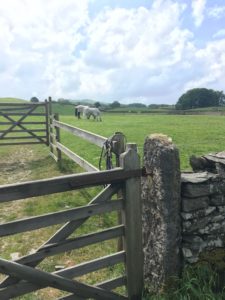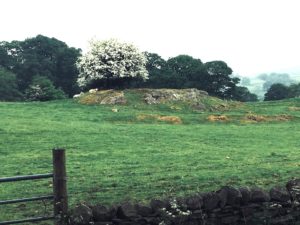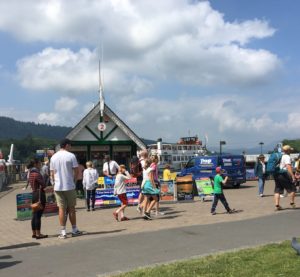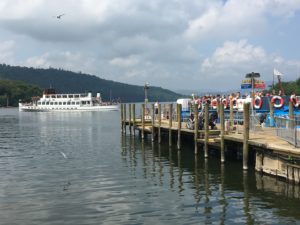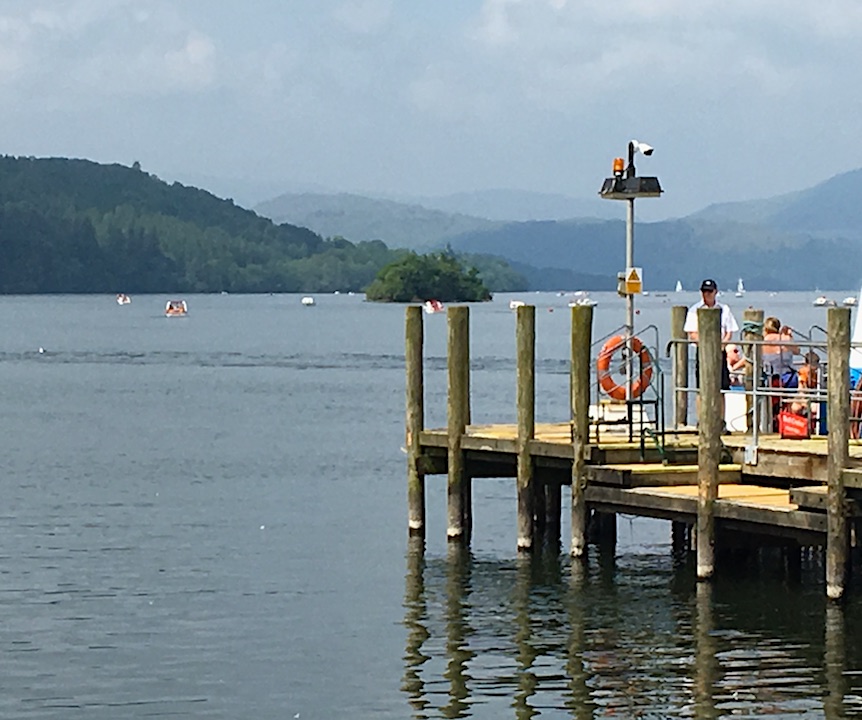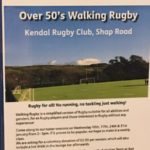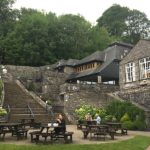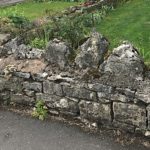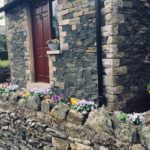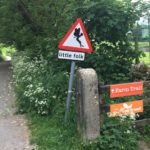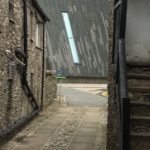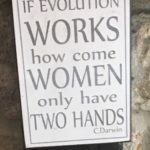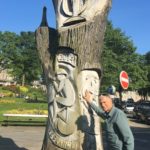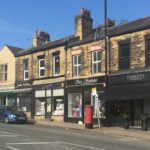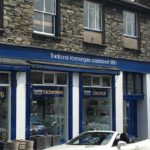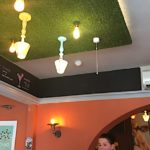We traveled to Northern England for Betsy’s nephew’s wedding in Yorkshire and, after the wedding, we took some time to look around Kendall and the Lakes District. Here are some highlights.
Off Betsy and I go to Northern England, my first visit to the land of Hobbes (Thomas, not Calvin-and-) to find the philosopher’s answer to a life that is naturally “solitary, poor, nasty, brutish and short!
”
Okay, no glumness here–we’re actually going to celebrate a wedding! Betsy’s nephew, Nicholas Eggers of San Diego, is marrying Aditi Das of Leeds, England, in a three day affair that we consider an improvement on last weekend’s Royal Wedding. For one thing, we’re invited. For another, the bride and groom are stars in their respective families and cannot be outshone by Prince Andrew, Meghan Markle or the Queen for that matter. And if that’s not enough, the clincher for us is that 2 of the 3 days are dedicated to Hindu wedding tradition and ceremony, which we haven’t witnessed before. This feels like an incredible honor!
Our preparation to date has consisted almost exclusively of watching BBC detective mini-series. We study the culture, dress and accent, and unfailingly admire the penetrating English intelligence and use of language. I highly recommend “Unforgotten”–after you’ve warmed up with “Foyle’s War”, “Endeavour,” “Inspector Morse”, “Inspector Lewis”, “Doc Martin”, “Broadchurch”, and–need I go on?
For all the studying, my personal grasp of English-speak is a bit shaky, as you may have already discerned from the title of this post. Between unfamiliar pronunciations and my personal hearing loss, I’m never quite sure if I got things right. This visit will be the test as I plan to talk like a native. Will I blend in? This could go terribly wrong–stay tuned and I will let you know.
We are trying some new things on this trip which add a certain unpredictability and excitement. First, we are flying Virgin Atlantic, the Richard Branson airline, and thinking it will be a better experience than staid, tight-seated old Delta. Secondly, we will travel exclusively by train, bus, bike and foot once we’re in country. This seems less exciting since I injured my foot in a running incident and we may have to add Uber/Lyft as an option.
We’re off!
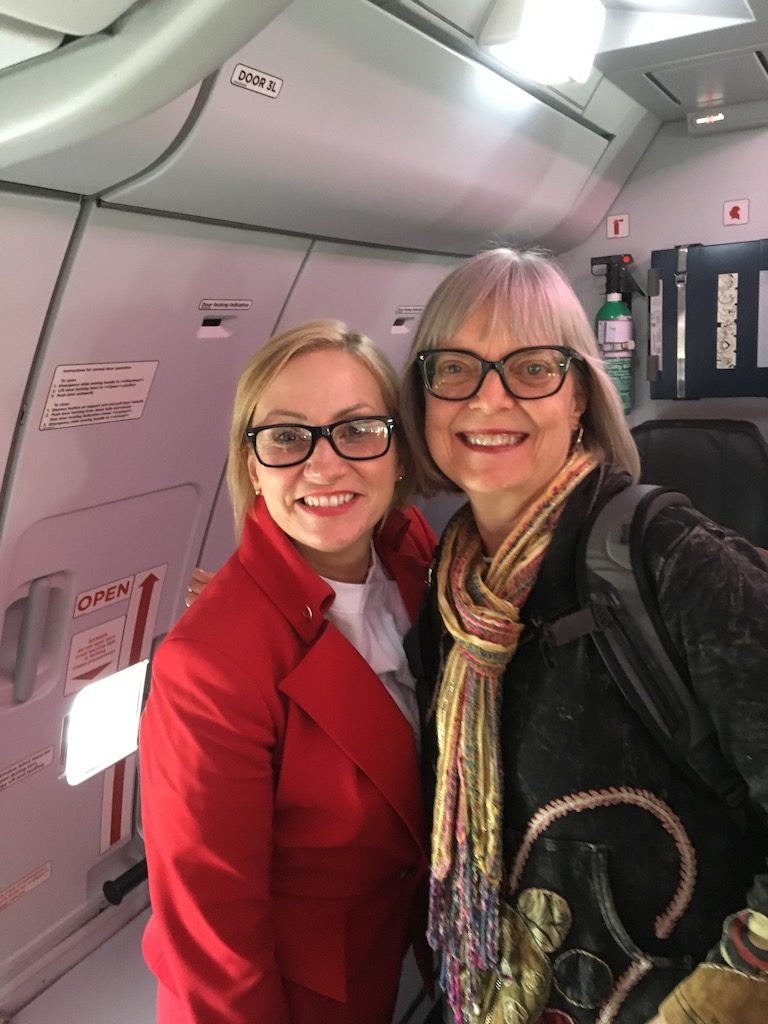
We had not yet left U.S. airspace when I had my first encounter with Brit-speak. A flight attendant came down the aisle and asked if we needed a London Ticket. What? A London Ticket.
“We’re from the U.S.” said Betsy helpfully.
“Yes,” said flight attendant, as if that ended the conversation, and began to count out two cards.
“But we’re going to MANCHESTER!” I added not quite out loud.
She handed us the two cards which were labeled in bold letters “Landing Ticket”. I would have described them as as “Customs Declarations” in American, but, whatever, I was instantly glad I had not explained my earlier thinking to her.
After some Ambien-fueled sleep, we had a chance to speak with her at length and learned she is from Leeds, about 20 miles from Harrogate, where the wedding will be held. We admired her delightful accent, and she laughed and explained that people from Leeds, and Yorkshire in general, have quite a distinct way of speaking—unless you are from Harrogate. Harrogate is pronounced “HAR-uh-gut” if you’re from Leeds or elsewhere, but “har-aah-GATE ” if you’re from Harrogate—and therefore deemed pretentious.
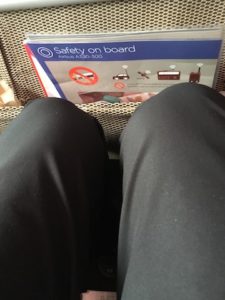
Re. Virgin Atlantics perks: that extra 3″ we upgraded for didn’t really amount to much–unless I think of the alternative.
Hmm, I’m going to have to keep a low profile until I’m more confident with this Brit-speak thing. And this is going to be more complicated than I expected…..
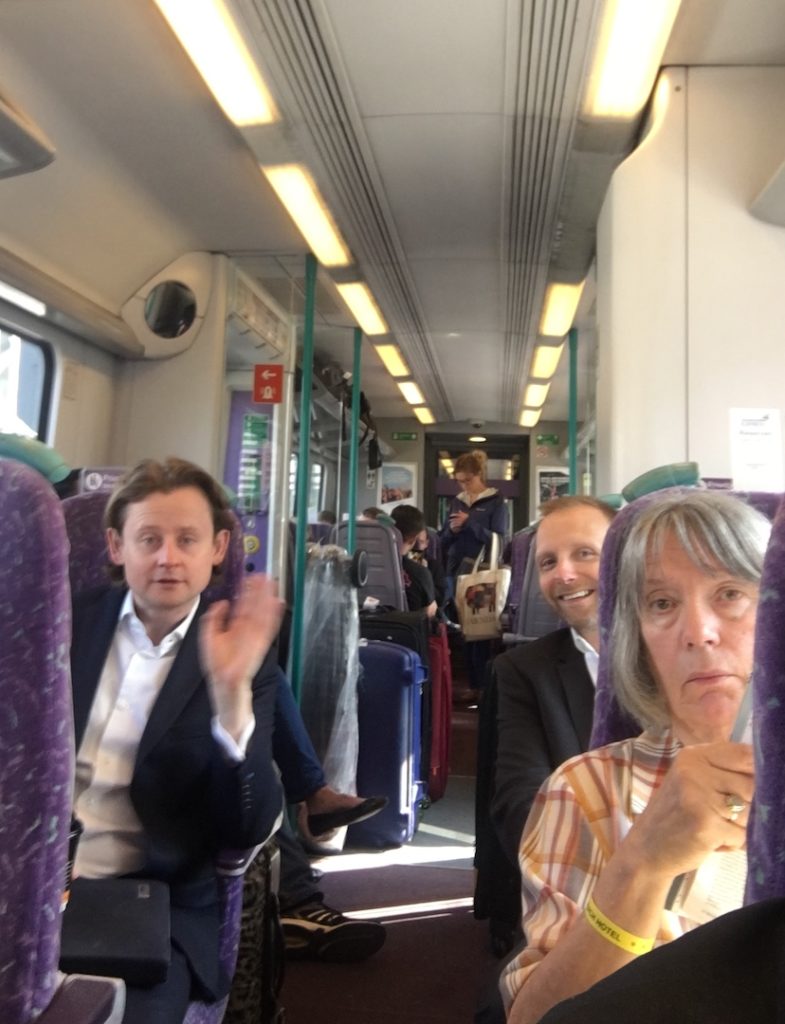
We arrived at Manchester International at 8:30 AM, walked through a skyway to the train station and boarded a train for Leeds. We felt alert after 5 or 6 hours sleep on the plane, and the transition was smooth, the train on time. We viewed Manchester through a train window and we saw construction cranes everywhere, intriguing modern buildings juxtaposed with dignified historic ones. Manchester looked like a city on the move.
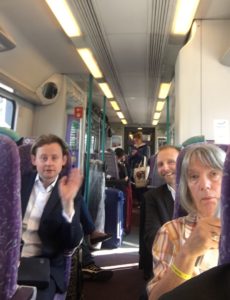
I cleverly put my camera on “selfie” to take a discreet shot of the train. Apparently, not everyone was fooled!
After an hour, we changed trains at Leeds and 30 minutes later arrived in Harrogate, the site of the civil service also known as “Wedding 1” . “Wedding 2”, the Hindu ceremony, would be at Shrigley Hall south of Manchester two days later.
We rolled our luggage a half mile to the White Hart, where a room was ready for us, and soon thereafter walked through Harrogate’s much-loved Valley Gardens to The Sun Pavilion where wedding preparations were underway. Jay and Sarah greeted us, and we were introduced to Aditi, the bride, and her wonderful family. They had much to do, and managed to combine industriousness and sociability effortlessly. We tried to make ourselves useful as we basked in the spirit of welcoming family and an upcoming wedding. It was a lovely, sunny afternoon.
Gallery
Preparing The Sun Pavilion
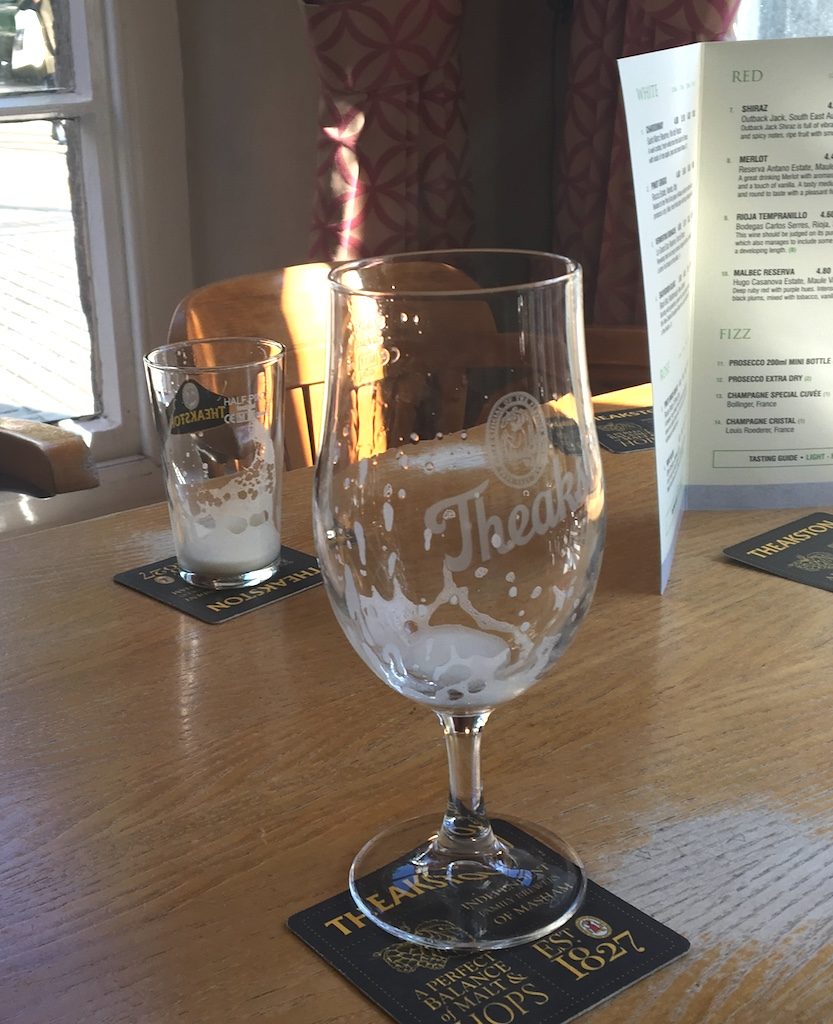
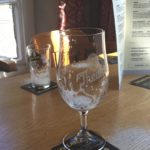 We dropped into The Montpelier Pub after meeting Aditi and helping with some wedding setup. It was late afternoon and seemed the perfect time to “stop for a pint,” just like our favorite BBC detectives do after work.
We dropped into The Montpelier Pub after meeting Aditi and helping with some wedding setup. It was late afternoon and seemed the perfect time to “stop for a pint,” just like our favorite BBC detectives do after work.
The pub keeper was a friendly chap and immediately recognized our non-standard speech—he guessed we were Americans. We had a chat, and Betsy decided he was the guy to answer a pressing 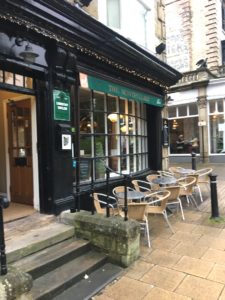 question: why in BBC detective shows do ordinary Inspectors call a woman Chief Inspector “Mum?” Is it a term of respect or is she, like, considered to be their mother? And, by the way, Betsy mused, what makes the Queen Mum a “mum” to the British public?
question: why in BBC detective shows do ordinary Inspectors call a woman Chief Inspector “Mum?” Is it a term of respect or is she, like, considered to be their mother? And, by the way, Betsy mused, what makes the Queen Mum a “mum” to the British public?
His explanation was straight-forward if subtle for an American commoner’s ear to comprehend. “Mum” when addressing one’s superior is actually “Ma’am”, a term of respect, while “Mum” is the same as “Mom” when speaking to one’s mother.
The Queen Mum, of course, is “Ma’am”, and is used to distinguish the mother of the current Queen or King, even though she herself was never in the royal lineage. For example, Diana, if she were still alive, would become Queen Mum at such time as her oldest son, William, became king.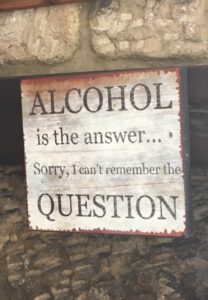
This led to the next obvious question: under what terms might Meghan Markle became Queen Mum?
“Never!” replied our friend quite emphatically. “Prince William has three sons!”
But what if Prince William and his family were flying to the British Virgin Islands for vacation and their plane crashed? Wouldn’t that make Andrew the First Prince, and therefore his son the royal lineage, and therefore Ms. Markle a future Queen Mum?
The pub keeper explained to us that an old friend of his had been an RAF pilot, and was an OUTSTANDING pilot, so much so that he was now the personal pilot for the royal family, or at least in charge of their aviation, and that such a plane crash could never happen while he was at the controls.
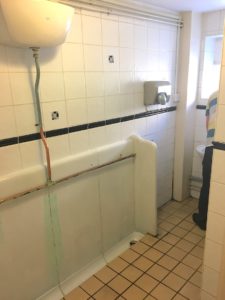 And that, my friends, is why Meghan Markle will never become Queen Mum!
And that, my friends, is why Meghan Markle will never become Queen Mum!
Friday dawned gray, cool and rainy, a classic May day in Northern England. We walked over to The Sun Pavilion under umbrellas around 12:30 PM and mingled with family and friends. Rain, in Hindu tradition we learned, is a good omen on wedding day as it promises fertility and prosperity—in fact, a monsoon is thought to be perfect.
The ceremony took place outdoors on a covered porch. Attire was “English formal”, giving the men a clear advantage with their long pants and suit coats in the 50 F temps and stiff breeze, while the ladies scrambled for shawls and sweaters but mostly just endured the elements in slim-strapped dresses. A local civic official presided over the ceremony.
Iinteresting fact: English civil marriage ceremonies are strictly non-religious, so much so that a proposed poem containing the word “blessing” was nixed by the presiding official.
The male advantage ended with the signing of the marriage certificate, as the fathers of the bride and groom remained seated while the mothers signed the marriage certificate along side the bride and groom. Isn’t England a patrilineal society? Why were the dads left out? The answer was obvious—but only after it was explained to me: one’s mum is not in doubt, whereas one’s dad, well, do we ever know for sure???
The ceremony was forthright and brief, the prelude to hugs, happy chatter, champagne, dinner and dancing that carried on til midnight. One question remained: were Nick and Aditi REALLY married? With a Hindu wedding coming up in two days (and an Episcopal ceremony in San Diego in October), which ceremony would be the real deal??
Gallery
Wedding 1 Photo Gallery
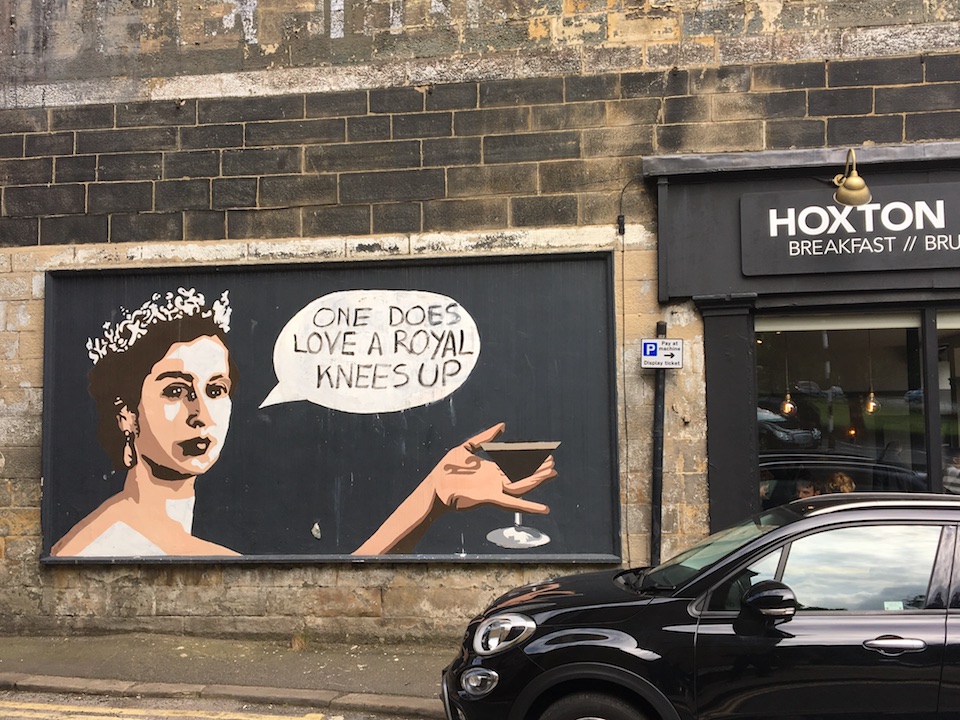
“Knees Up” was Friday night’s theme for the younger crowd. The Hoxton has great breakfasts, BTW, for those who get up early enough (like us!).
The Sun Pavilion closed doors at midnight Friday, which meant the younger celebrants had to move the party into Harrogate proper before finally winding down at 5 AM Saturday. The kids looked a little worse for wear at 11 AM but were still smiling as the entourage loaded up cars and headed for Stockport, home of Aditi’s parents, to prepare for Sunday’s Hindu ceremony
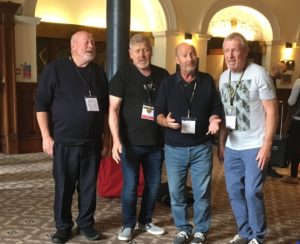
The barbershop quartet gave the wedding party a final impromptu sendoff in the hotel lobby before the chaps headed off to their competition.
Aditi’s parents, Geeta and Deb Das, have tremendous stamina. How else to explain their hospitality as they packed up one wedding venue, then opened their home to 50 family members for henna tattooing, cleansing rituals and an Indian dinner, before prepping for a second wedding venue?
The rituals were a convivial, family-and-friend affair that took most of the afternoon. After an expansive dinner of Indian food, we wrapped up at the Das’ house just before 10 PM Saturday night and Deb drove Betsy and I to Shrigley Hall where we would be staying–and the site of the next morning’s Hindu ceremony. He was transporting holy sand and other ceremonial accessories as well as us.
To the medicare crowd, “Knees Up Mother Brown” was playing on a continuous loop…
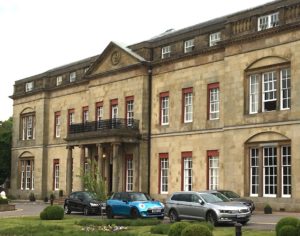
Shrigley Hall, site of the Hindu ceremony. It’s a former family estate, later a boarding school, now a country house resort and getaway.
The Hindu wedding started at 11 AM Sunday with 150 or so family members and guests gathered in a private room at Shrigley Hall. A priest began meditation and chanting in Sanskrit, pausing from time to time to explain to western guests, in what quickly became a moving, memorable and spectacular experience. Written explanations were also provided in a program.
The service was highly ceremonial, but never formal, as guests continuously moved about, chatted, snapped photos and joined in with ululations and conch shell horns as called for. It was simultaneously a holy ceremony and group celebration. I won’t attempt to capture it’s symbolism and richness, but let’s see if photos can capture some of the spirit.
There can be no doubt: Nick and Aditi are married!
- Geeta offers food to Nick, symbolizing her acceptance of him.
- Deb produces the dowry, which Nick accepts.
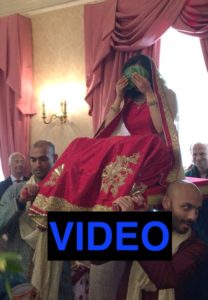
Here comes the bride! Aditia covers her eyes discreetly as, by tradition, she has never yet met or seen her husband-to-be!
- The bride approaches the groom.
- Aditi, still borne by her brother and friends, circles Nick seven times. The bearers claimed to have lost count!
- A scrum of photographers captured each ritual–paparazzi at a celebrity news conference. It was a challenge to take photos without arms and heads in the foreground.
- Dusty waits, royally attired. This will be important in the next post.
- Aunt and sister drape bind their wrists with flowers.
- The bride and groom’s scarves are tied.
- After reciting vows before the Fire God, bride and groom circle the fire four times while the priest chants.
- Dale places an iron bangle on Aditi’s wrist, welcoming her into the groom’s family.
- Ceremony complete, Nick and Aditi present themselves to family and friends.
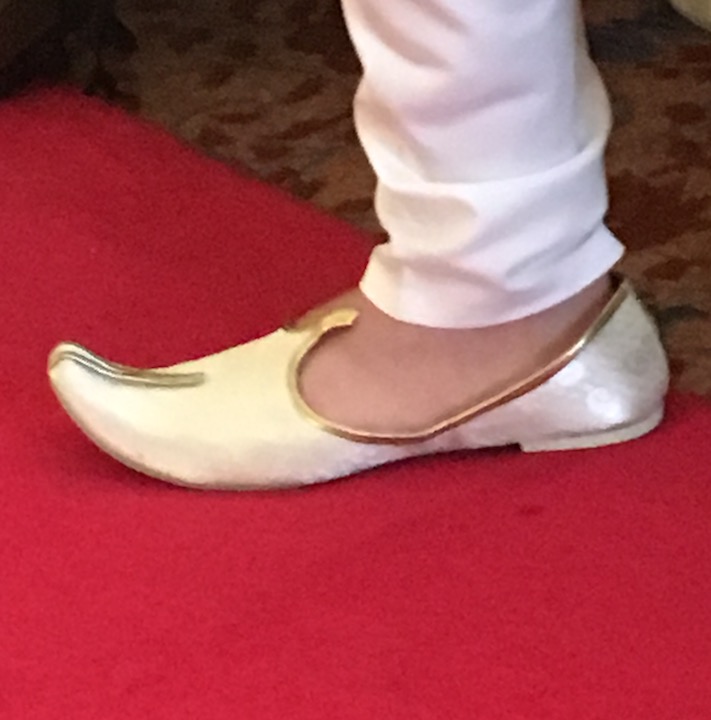

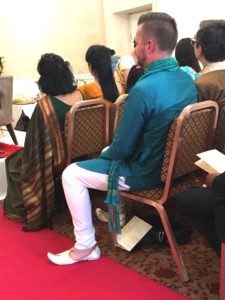 Amid the marriage ceremony, a sudden row worthy of the WWF broke out amid assembled friends and family. I could not get close enough for a photo, but Dusty was on the floor, struggling, as a throng of younger celebrants shouted, pushed, pulled and pummeled him. When the melee subsided, Dusty was barefoot. The
Amid the marriage ceremony, a sudden row worthy of the WWF broke out amid assembled friends and family. I could not get close enough for a photo, but Dusty was on the floor, struggling, as a throng of younger celebrants shouted, pushed, pulled and pummeled him. When the melee subsided, Dusty was barefoot. The 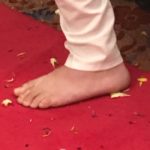 ceremonial shoes had been given to him by Nick so this was obvious a serious matter—he had lost the groom’s shoes! Dusty retook to his seat in disgrace. Would the shoes ever be recovered?
ceremonial shoes had been given to him by Nick so this was obvious a serious matter—he had lost the groom’s shoes! Dusty retook to his seat in disgrace. Would the shoes ever be recovered?
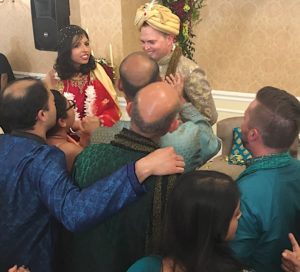
After the ceremony, Nick conducts a raucous negotiation with the bride’s friends for return of his shoes.
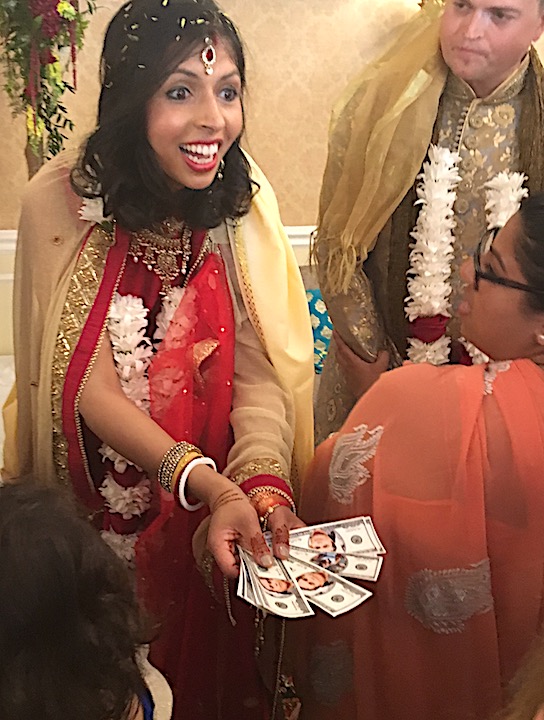
Aditi saves the day with cash to ransom back the shoes. Note pictures of wedding party members on the bills.
It turns out his loss has a name—Joota Chupai—and the theft was premeditated by friends of the bride, who then go on to hide the shoes. It’s a light-hearted game meant to show the acceptance and open hearts of both sides of the family and how willing and ready they are to share lifetime of laughter and fun together.
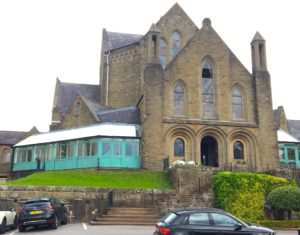
Shrigley Hall Chapel has become a spa to serve Shrigley Hall. Someone–not a historic preservationist–forgot to take away the temporary construction entrance.
We rose on time Monday morning, enjoyed a final Shrigley Hall breakfast with Jay, Dale, Sarah, Nick, Aditi, Geeta and Deb, then headed for Kendal and the Lakes District.
The Lakes District appears to be England’s Yellowstone, or perhaps more modestly, its Adirondacks, featuring low mountains (3,000 ft) and natural lakes. It is one of the most popular holiday trips, and we had just learned that Monday is a “bank holiday”, and that most schools would be out for the remainder of the week. We love off-peak travel, but it seemed the Lakes District would be expecting more visitors than just us.
We arranged a taxi to take us to a nearby train station, and the taxi driver, anticipating a slow day, offered to drive us all the way to Kendal for a special rate. It would be so easy….no luggage transfers….speedy direct route….country scenery on a calm sunny morning….that we did a quick calculation and decided, why not? The train would cost $100 for two, the taxi $250, and we’d save an hour and unforeseeable complications and enjoy the country.
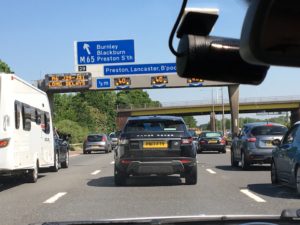
Atlantans may feel reassured to know there is car congestion on 3 lane expressways in rural northern England.
After winding through the country for 30 minutes, we passed the train station and hit the “motorway”—i.e. expressway. Whereupon we spent the next 2 hours amid heavy traffic and typical freeway views before finally exiting for Kendal. In the end, we saved 15 minutes for our $150 investment and an I-75 experience.
We will opt for the certainty and minor inconvenience of a train transfer when we return to Manchester airport on Friday!
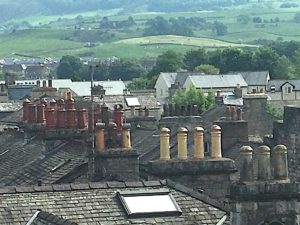
Kendal rooftops from our hotel. Many buildings are from past centuries when multiple fireplaces meant multiple chimneys.
We chose to visit Kendal because it is a good entry point to the Lakes District without being as tourist-centric as many of the better known towns (Ambleside, Windemere, Bowness, etc). It has proved a worthy choice with lots of historical interest, lively streets and an workaday English vibe. While tourist buses pass through town or stop for an overnight, Kendal doesn’t feel beset by visitors (to this visitor!).
Kendal is a “market town” on the River Kent, often known as the “Gateway to the Lakes [District].” Its origins go back to 100 AD with the founding of a Roman fort in the area. Normans succeeded the Romans around 700 AD, and Kendal found its way onto the English map when the Edward I, needing Crusades cash, granted a market charter in 1189 AD.
Kendal came into its own as a trading town in the 1400’s due to its geographical position at the center of the Westmorland wool industry, and its rough sturdy wool became famous as “Kendal Green”–even making its way over the Atlantic with early American settlers.
Quakers and Methodists came to Kendal in the late 1600’s, eventually giving rise to tolerance, improved political life and new economies such as banking, leather-tanning, shoe-making and water turbines. Today Kendal remains a market town for the area, and adds tourism to its economic profile.
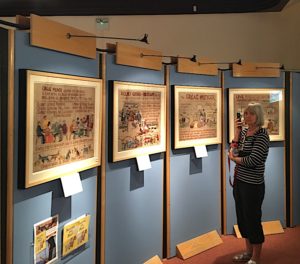
The Quaker Tapestry, a 10 year project centered in Kendal, recounts Quaker history and values. It is made of squares composed by Quaker groups from all over the world.
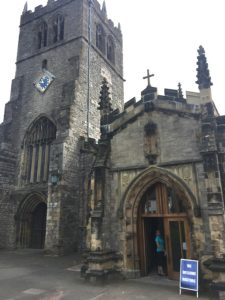
Kendal Parish Church, built around 1200 AD as a Catholic cathedral before converting to Anglicanism under Henry VIII.
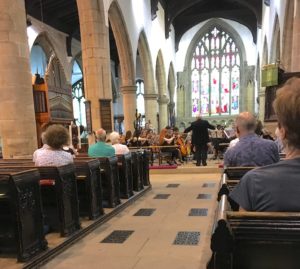
We attended a Glasgow University Chamber Group symphony in Kendal Parish Church on Thursday night–two pop music fans’ annual contribution to classical music.
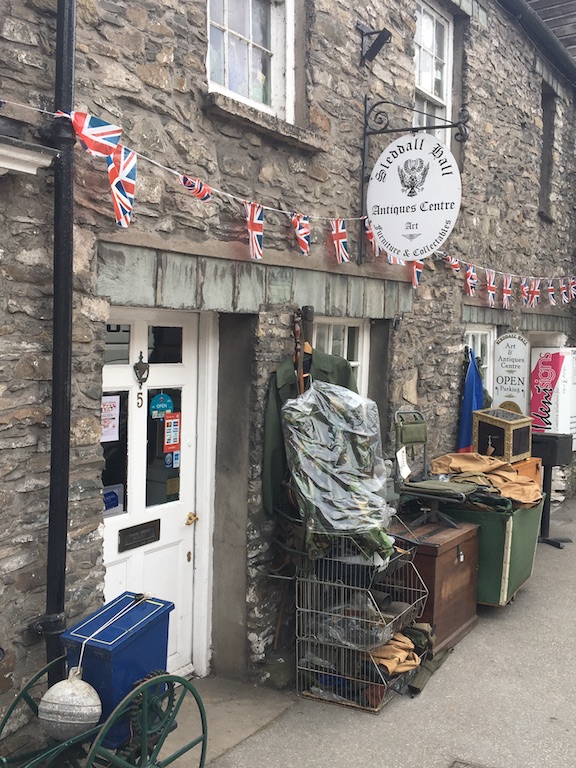
The Kendal Museum was unexpectedly closed so we had some time to kill. We wandered past a humble store advertising antiques and decided to poke our heads in.
We aren’t antiquers, and wouldn’t recognize a “find” if it hit us in the head, but we guessed that “eccentric” could as likely describe many of the shop items as “old.” Luckily, Marjorie greeted us, and thus started our discovery. She described her granddaughter as a girl “with brains as big as a planet,” which captured our experience of her as well.
It was a delightful hour, not to be found on any TripAdvisor lists.
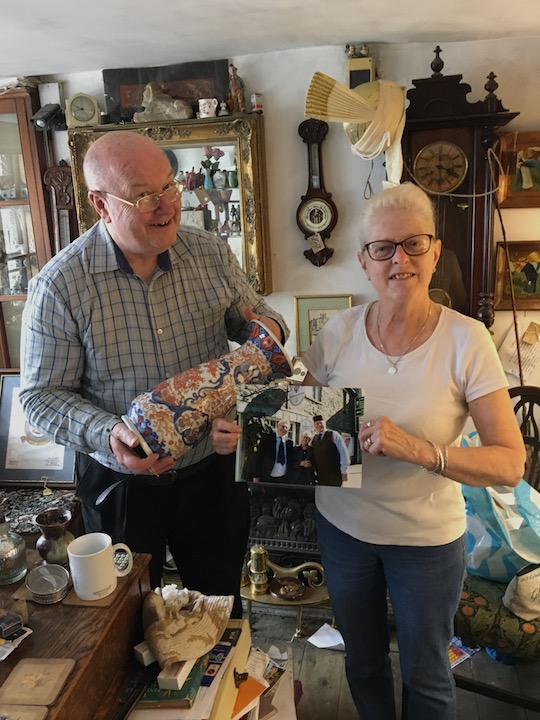
Marjorie and store owner, Robert, show us photo of BBC’s Antique Road Show host who was present for a shoot 2 weeks ago. It’s the 6th time the shop has been featured on the show, which will be broadcast in September. “They were not at all stuffy–they were quite fun!” she recounts. Note the Hindu headdress hanging on the grandfather clock.
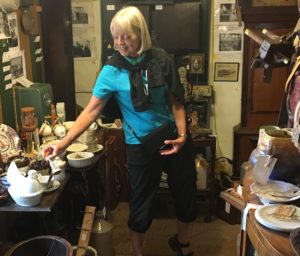
Betsy appraises odd and old things. Marjorie has several degrees in design, and volunteers once a week at the shop to organize product display. Given the volume of things and small shop, her efforts must be diligent but aren’t always obvious.
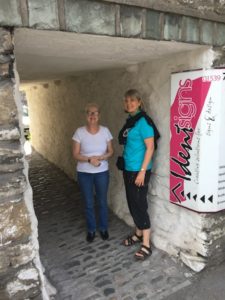
Marjorie introduces Betsy to a “ginnel”–an old low passageway between buildings. River Kent flooded this ginnel and the antique shop 2 years ago, creating losses and headaches.
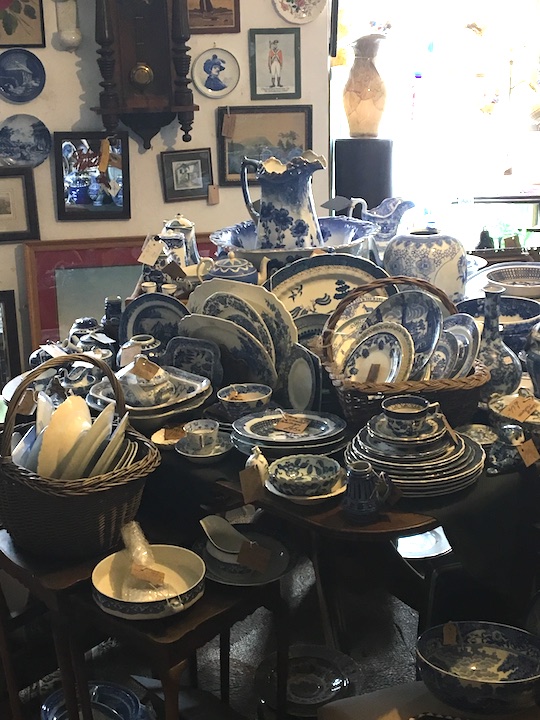
The second floor was bountifully loaded with old stuff–and creaky. I avoided standing in the same place as Betsy as I’m sure the loading wasn’t analyzed by an engineer!
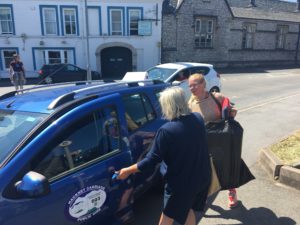
The woman in orange shoes was training for a 30 mile trail run in a few weeks. Her husband, though, was aiming for a 50 mile trail run and had run 30 miles on Monday. “He’s a bit of a nutter!” she exclaimed. Those Brits—now we have a new word to describe lots of people we know!
Shortly after arriving in Kendal, we set out to “hire cycles” in Brit-speak so we could extend our range beyond walking distance. The nearest cycle hire was 10 miles away in Windermere and we went to hop a train for the 15 min. ride, whereupon we learned that the train which runs every hour was canceled indefinitely. Two local women explained the situation to us, called a taxi and allowed us to share a ride.
The Cycle Hire was immediately adjacent to the train station—a lesson for transit options everywhere—and we were soon mounted on perfectly-tuned Marin hybrids heading back to Kendal. A “cycle path” picked up 400 m
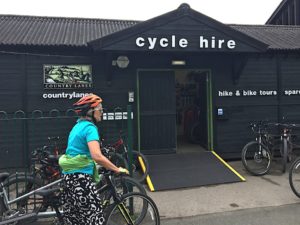
Those Brits have a different word for everything! We rent cycles and hire people. Brits hire cycles and rent people?
outside the station and took us 4 mi. to where we could roll onto small backroads. Thank goodness, because car traffic on A591 from Windemere to Kendal was intense with little patience for bikes.
The last 6 miles on quaint country roads made our day. It’s why we love to get on a bike!
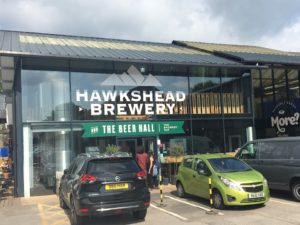
Well-known craft brewery in Stavely, near Kendal, which happened to be right on our route. Stop required!
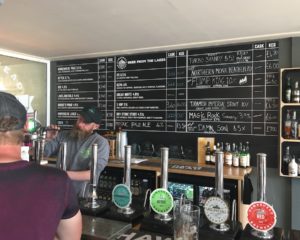
Evidence that the Brits are finally stepping up their beer game. The bar keep did his best to explain the difference between “Cask” and “Draft” beer. “Cask beer is live beer and draft beer is dead beer,” is his summary.
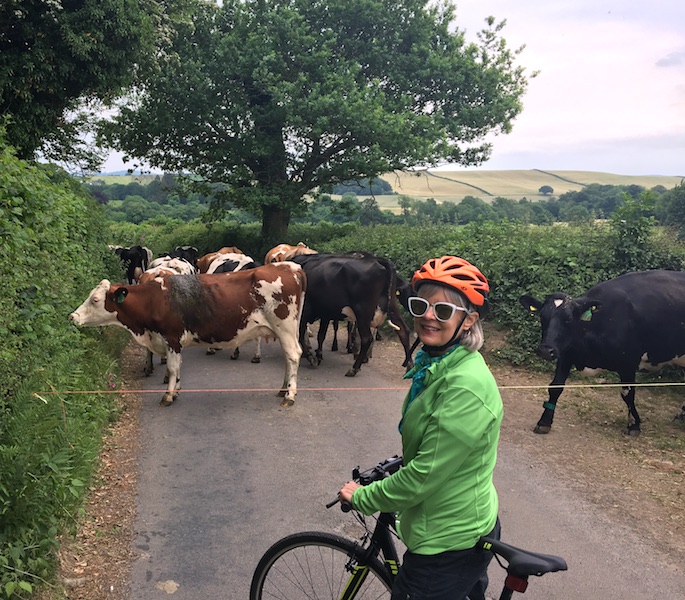
Some of the best destinations are those we never reach.
We pedaled south of Kendal on Wednesday toward Sizergh Castle, a tourist site with noteworthy English gardens. It was an excuse to get into the country, and when a local described Sizergh Castle as “just a manor house, really” and we contemplated the stiff cover charge, we continued on without much conviction. After about 7 rolling miles of cycle path and narrow country road, our pedaling slowed and we welcomed a sign to “Old Sizergh Farm” with an arrow up a side road. It
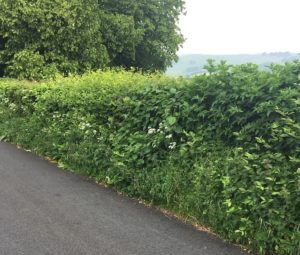
We were soon into the country. Pretty country lanes have their perils–that is, thick hedges and stone walls tight to the edge of one-car-width paving. There’s no place to dive if a car misjudges so we were thankful to see drivers come around curves and over rises carefully.
proved to be a large working dairy with a charming farm store, just the excuse we needed for a visit to the countryside.
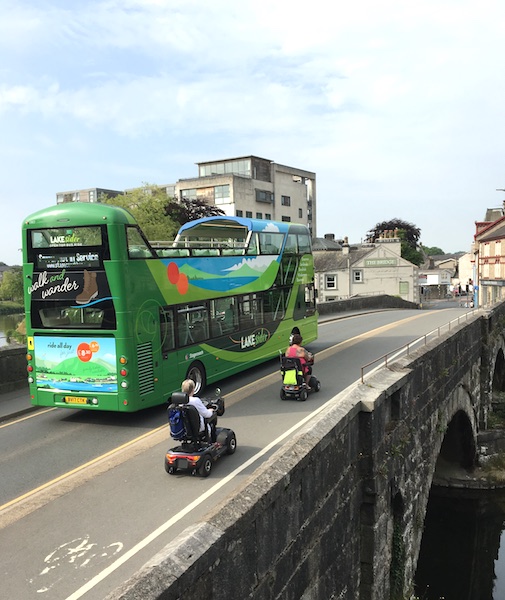
Our hotel room was perched on the corner of the hotel with windows overlooking the Stramongate Bridge. My first thought was that traffic noise might define our hotel experience, but cars and trucks quickly faded to the background as we began to watch the bridge, the river, and the parade of Kendalians.
A person can anonymously meander back and side streets for a while, but ultimately to cross the river one must go to the bridge. A bridge concentrates people. It also provides a long vista, a place to pause, take a breath and gaze.
It is a meeting point of nature and city, a brief interlude of water, air, and birds within the grid of buildings and traffic that structure urban life.
- Hmm, why is that there?
- A bike with a story…
- Bound for work
- Walking….
- Riding….
- Two red ties
- Cell phone check
- Time for a smoke
- Awaiting bus at foot of bridge
Cumbria is the province that is home to Kendal and the Lakes District, and it reportedly has distinctive characteristics–though they might not be the ones that follow in this post. I mostly like the word “Cumbria” and want to get it into the blog!
Northern England clearly has a dialect—a country twang, one might say—and regular Brits think it harder to understand than the educated English of business London and Southern England. Since I’m still looking for my “London Card” and I still don’t have a hearing aid, I agree. You can decide for yourself by listening to the butcher.
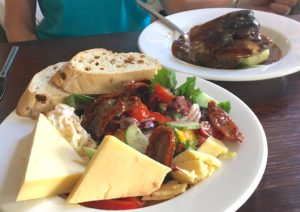
Final day’s lunch: Lamb Henry (not to be confused with Henry Lamb, English painter) turns out to be slow-cooked lamb over mashed potatoes in a mint, currant and vinegar gravy. It was very tender. The “lite dish” salad featured a full pound of local cheddar cheese, which answered our question of what to have for dinner.
The regionality of food dishes is less certain to novice UK travelers like us, but when Black Pudding and Lamb Henry repeatedly showed up on Cumbrian menus, Betsy and I thought we should give them a try. They are Cumbrian to us. Lamb Korma and Tom Kha Gai also show up frequently in Cumbria, but I know better than to try to convince you that they are Cumbrian!
- Everything you want to know about Black Pudding. 1) Add a Guinness
- 2) the black part is SAUSAGE, served with egg, potatoes, cream sauce
- 3) the sausage is very mild and slightly earthy; dried blood gives it the black color; it makes a hearty meal
On Thursday we needed to return the bikes so we re-traced our route to Windermere (the town) and continued on a mile to Bowness-on-Windermere, home of Lake Windermere ferries. “Lake Windermere” is actually redundant and historically incorrect since “mere” means “water”, but when a town near the mere took on the name “Windermere”, something had to be done to stop the confusion. Windermere (the lake) is the largest lake in England and a popular spot for water sports, though at 1/10 the size of Lake Lanier and a summer water temperature around 60 F, most Georgians will not be impressed.
We had an idea to take a ferry across the lake and pedal up to Wray Castle, but the ferry ranevery hour and our timing was such that we weren’t going to make it back to Windermere (the town) by 5 PM to return our bikes. So we opted to watch people, dogs and boats for an hour before returning to Cycle Hire and taking a taxi back to Kendal.

Pedaling through Bowness-on-Windermere: note 2′ wide “cycle path”, common where we biked–it works well enough, especially if cars limit speed to 25 mph.
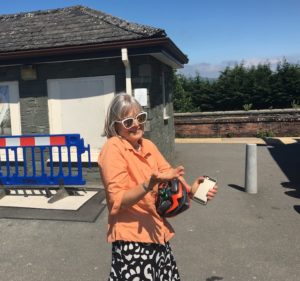
The only way we found to know if Northern trains were running was to go to the station and read a video board. Nope, no trains today.
The Northern Railway trains to and from Kendal were mostly canceled during our stay due to “lack of drivers” leaving us to take a taxi or emergency bus to get to Windermere or Oxenhall. Nobody seemed to know exactly why. One story was that Northern was cutting out conductors, leaving the train driver as the only employee to run the train, check tickets and “sort it” if there was an altercation. This struck the drivers as impossible work conditions and they responded by frequently calling in sick.
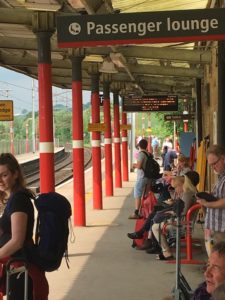
Waiting at Oxenhall station after a short taxi ride from Kendal. Transpennine Express trains were running reliably and zipped us back to the airport.
Northern claimed they didn’t have enough trained drivers and weren’t getting applicants, but our taxi driver disputed that as he didn’t see any “adverts” posted for train drivers. Plus, he opined, drivers make L50,000-L75,000 a year, a very respectable wage, and many people would want those jobs. Northern suggested they might stop operating the route as it was a money-loser, but the national government declared that Northern HAD to continue or else, according to our taxi driver.
Regardless, between regular buses, special buses and taxis, everyone seemed to fare reasonably well. The transportation system showed redundancy and resilience, in planning-speak. The biggest worry, expressed by one local, was that “it looked bad for the Lakes District not to have trains with the main tourist season about to start.”
Think Super Bowl in Atlanta with MARTA drivers on strike. Atlanta would look bad. But does Atlanta’s transportation system have enough redundancy and resilience to move people anyway?
Every adventure has moments or photos that don’t fit a post but are worth noting. Here’s our No. England scrapbook.
- Still trying to wrap my mind around this. No tackling allowed? Should they stick to croquet?
- Social housing in Kendal on the River Kent–a premium site that might be reserved for high-end development in the US
- Brewery Arts in Kendal–an old brewery and warehouses converted for theater arts. Grants and benefactors assure that it remains a community asset.
- England’s answer to Mexico’s rock walls topped with embedded glass.
- Or wall top option: fill with flowers.
- Old Sizergh Farm: any place that promises a fairy crossing must be worth a visit.
- The only modern building we found in Kendal is this performing arts center for Kendal College of Art and Design. It is tucked behind old stone buildings and can’t be seen from the street.
- Performing Arts Center
- Rain screen corner detail. The panels are strips of solid-surface material.
- Creationist pub sign?
- Old meets new in Leeds: cars, trash cans, find their place at the front entrance of many apartments.
- Harrogate was a finish town for 2014 Tour de France. Here’s their memorial to the event.
- From cheesemonger to fishmonger…
- …England is full of mongers!
- Turf ceiling anyone?

